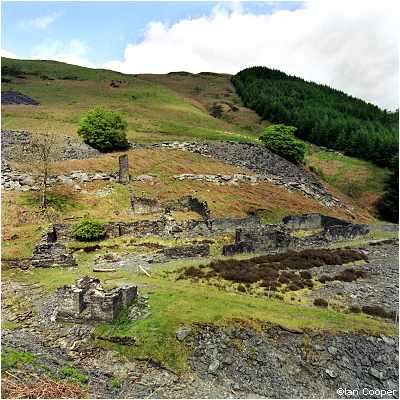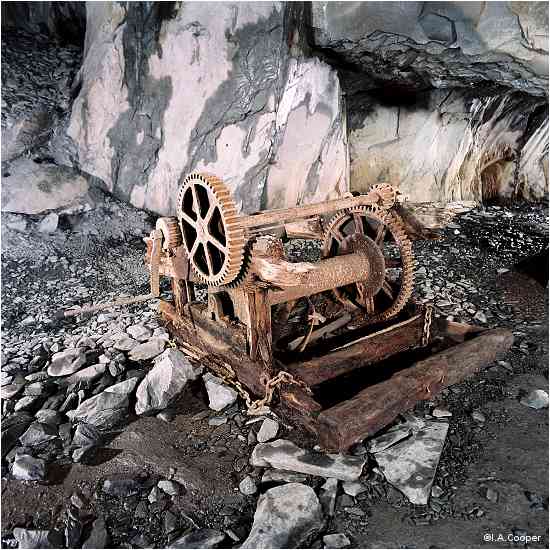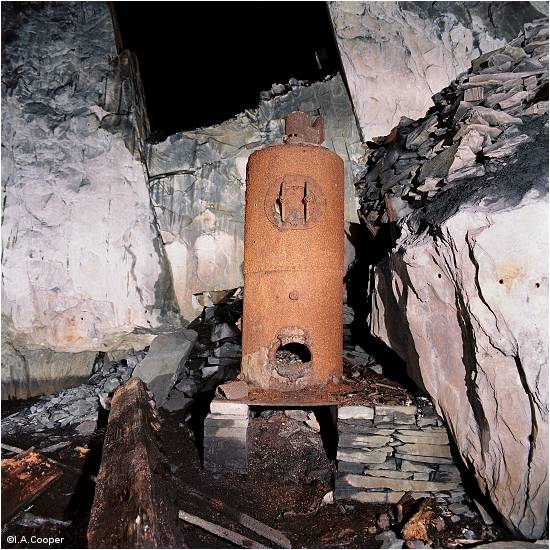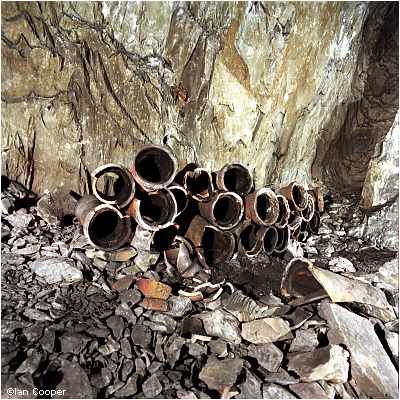Minllyn Slate Mine |
||
 Minllyn slate mine started life as a series of hillside quarry workings before development in the 1870's. The site mainly produced 'slab' slate, which was processed at an on site mill driven by a water turbine. A new larger processing mill was later built at the base of the hill alongside the main road, this has survived and is now used as a woollen mill and craft centre. After processing the finished slate was taken via a short tramway to Dinas Mawddwy station at the end of the Mawddwy Railway, this joined the 'Cambrian Coast' main line near Cemaes Road. Although reasonably extensive, the workings weren't that productive, in 1882 108 men were employed at the mine, which produced 2,830 tons of slate.
The mine is reached from a public footpath, which climbs steeply from near the main road through a forestry plantation to the workings near the top of the hill. The ruinous remains of the original processing mill are present, as is a chimney and the remains of winch houses. Although the mine closed around 1916 there are still occasional gate valves and pipes in situ across the site, along with wire cables abandoned down the inclines, and short sections of rail.
A lined tunnel passes from the processing floor through to a small quarry pit and the start of the main adit. A pile of fallen rock from the pit has fallen at the mouth of the adit, causing water to back up behind. Just inside the entrance a truck for transporting slate waste stands half submerged in the trapped water, further on the adit gradually climbs out of the water to meet the worked out chambers.  For the size of workings quite a lot of artefacts were left in place when the mine closed down. Around half the chambers contain 'climbing chains' still hanging from the roof, these were used to provide access to the upper reaches of the slate chambers, and are a frequent sight in abandoned slate mines. In a number of chambers the timber supporting frames from hand winches can be seen, including in one case a complete winch.
  In one area the workings dropped below the level of the main adit, and thus below the level of natural drainage. Still standing alongside the deep flooded workings is a vertical boiler and the timber framework from a crane. Alongside these remains are various rods and cranks that might suggest the steam engine also drove a pump to keep the workings clear of water. The engine itself and all the boiler fittings have been removed, but stacked nearby are sections of soot lined ceramic pipes that took the boiler's smoke to the surface through an adjoining chamber, breaking out to daylight further up the hillside.
|
||
| All photographs are the work and copyright of Ian Cooper. | ||
